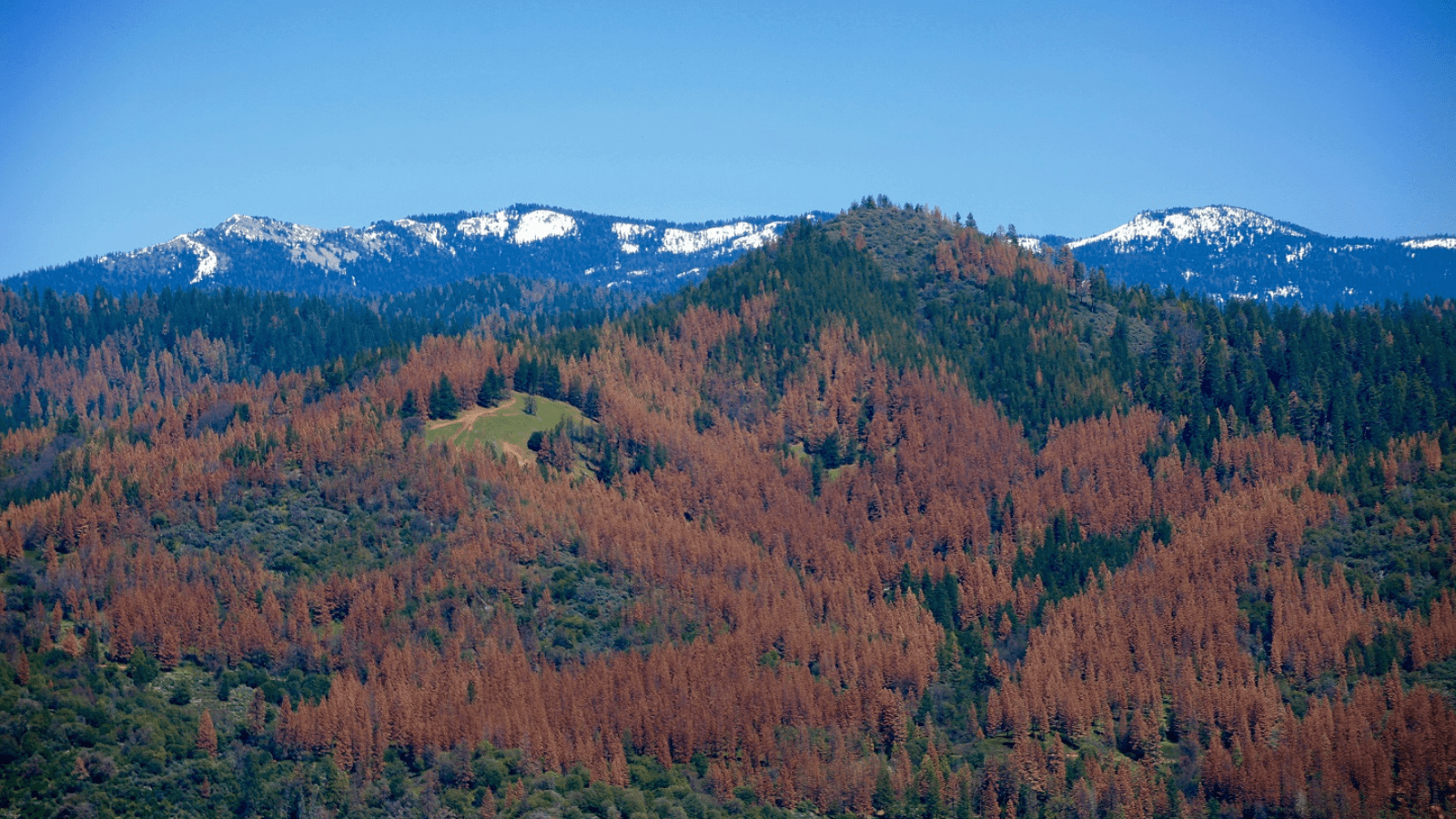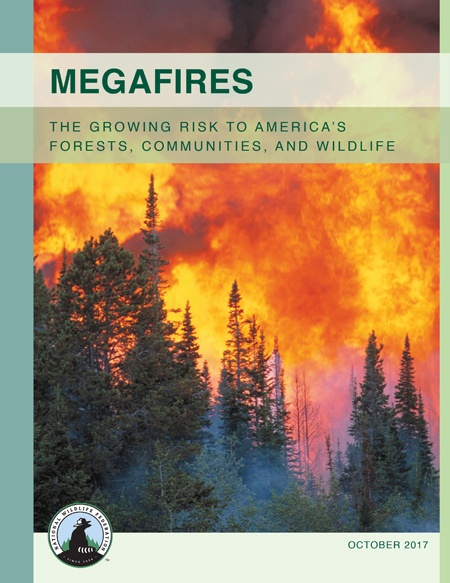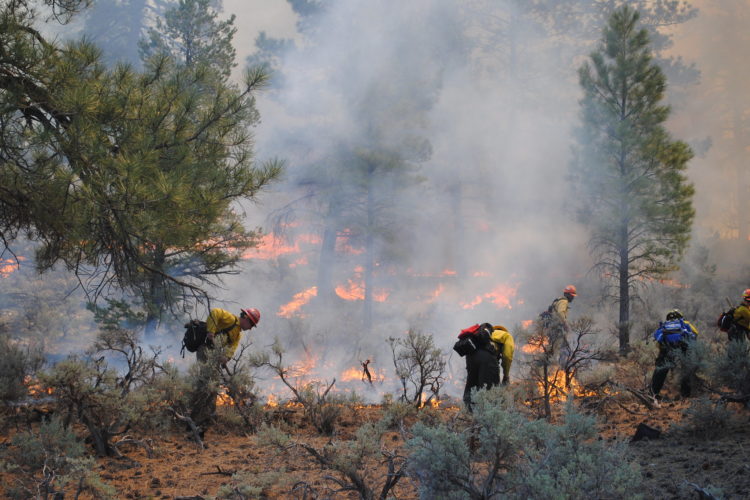We have much more to do and your continued support is needed now more than ever.
Restoring Our National Forests to Meet the Challenges of a Changing Climate

The massive wildfires blazing across the West have brought into sharp relief the intersection between climate change and the poor condition of many of our forests and other wildlands. Although most western forests require periodic fire to remain healthy, decades of aggressive fire suppression and other management practices have in many places resulted in overly dense forests and an unnatural build-up of fuels.
On top of this, climatic changes—including warming temperatures and shifts in rainfall patterns—are leading to drier and more flammable vegetation. Water stress also makes trees more susceptible to attack by disease and insect pests, and in California alone, more than 120 million trees died during the recent multi-year drought. This interplay between a rapidly changing climate and large areas of unhealthy forests has set the stage for a new era of severe and destructive megafires.

Although burning forests are a symptom of accelerating climate change, forests by their very nature can also be one of our most powerful tools for combatting climate change. By absorbing and storing atmospheric carbon—the underlying driver of global warming—forest trees have the capacity to significantly reduce the pace of warming. Beyond their value as carbon sinks and sources of wood products, healthy forests also provide a wide range of benefits to society, from the production of clean water and provision of wildlife habitat to opportunities for outdoor recreation.
National forests, which are managed by the U.S. Forest Service, are of particular importance to the nation. About 145 million of the Forest Service’s 193 million acres are in forest representing approximately 20% of all U.S. forest lands. Although most of these lands are in the West, national forests are found across the country, with many in the upper Midwest, Northeast, and Southeast. Unfortunately, many of our national forests are in poor condition, due to a legacy of logging and grazing, long-term fire suppression, and constrained management capacity. The Forest Service estimates that between 65 and 82 million acres of national forest lands are in urgent need of restoration.

Accelerating climate change and growing wildfire risks make this restoration challenge all the more pressing. There is an urgent need to increase the pace, scale, and quality of forest restoration to help these forests better cope with and adjust to the growing impacts of a changing climate, as well as to ensure that our forests can continue absorbing and storing the carbon that make them “natural climate solutions.”
The National Wildlife Federation is working in partnership with The Nature Conservancy and American Forests to promote a revitalization of America’s national forests as a way to sustain and enhance the many benefits—ecological, economic, and climate protection—that these natural lands provide to all Americans. Doing so will require a dramatic increase in climate-informed and ecologically appropriate restoration.
With support from the Doris Duke Charitable Foundation, our organizations convened many of the nation’s leading experts in forest policy and management to help us develop policy recommendations designed to increase forest restoration in ways that achieve climate mitigation (i.e., carbon) and adaptation (i.e., resilience) outcomes.
Funding
After years of underinvestment in forest management, increasing the amount of funds available for restoration and reforestation of the nation’s forests is essential. To begin addressing this long-term underfunding, an additional $1 billion a year is needed to carry out priority restoration and reforestation projects and programs on our national forests. Given the immense costs of uncontrolled wildfires, this represents a cost-effective investment.
Forest Management
More funding is a start, but the forest management and restoration efforts that are carried out must be done in ways that are ecologically appropriate and explicitly take a changing climate into account. In the past, forest management often focused on meeting timber extraction goals, but moving forward restoration and management should support the full range of benefits that national forests provide, including clean water, wildlife, and outdoor recreation. There are great opportunities for advancing climate-informed forest management through existing policies and programs, such as the Collaborative Forest Landscape Restoration Program. Investments are also needed in programs like the USDA Climate Hubs and Forest Health Threat Centers that provide essential research and technical assistance for realizing climate-informed forest management.

Reforestation
There is also a growing need to ramp up reforestation and tree planting efforts, particularly in areas where natural regeneration is not possible or is unlikely, for instance, due to unusually severe climate-fueled wildfires. We need to make sure that tree planting efforts use “the right trees in the right place”, which includes taking into consideration how trees planted today will fare in the climate of tomorrow. Increasing the scale and scope of ecologically appropriate reforestation is also needed to capitalize on the carbon-capturing power of trees as a natural climate solution.
Natural Carbon Sequestration
Restoring our forests offers a common-sense avenue to combat climate change by promoting nature-based approaches for removing carbon from the atmosphere. Stabilizing the climate will require such “natural climate solutions” for absorbing and storing existing atmospheric carbon, in addition to aggressively cutting greenhouse gas emissions from industry and vehicles. Policies are needed that encourage the Forest Service to optimize—rather than maximize—carbon storage on its lands in ways that also enhance wildlife habitat, produce clean drinking water, lessen air pollution, and protect iconic landscapes. Achieving such natural climate solutions would greatly benefit from the establishment of a carbon storage goal for the national forest system, as well as improved carbon monitoring systems.
America’s national forests are central to our well-being as a society, but years of underinvestment have left many of them in an unhealthy and excessively fire-prone state. To ensure these forests continue to provide the full breadth of environmental benefits—and have the capacity to survive and adapt in an era of rapid climate change—we must work together to scale up the application of science-based and climate-informed restoration and management of these national treasures.























